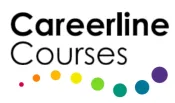Having an understanding of how statistics work will enhance your career or broaden your understanding of how to deal with large quantities of data and make better informed decisions.
Whether you’re headed into the social sciences, looking to work in IT, or just really love studying maths, studying statistics is for you! Statistics is used to underpin investigations, create, collate and test data, examine theories and demonstrate patterns. It is used in any job that depends on data, and is a useful skill to add to an existing qualification.
You’ll find stats useful for careers including work in teaching, health care, science, research, sustainability and environmental management, consulting, the private sector and not-for-profits.
There are 10 Lessons in this course:
1. Introduction
-
- Key terms and concepts: data, variables
- Measurements of scale: nominal, ordinal, interval, ratio
- Data presentation
- Probability
- Rounding of data
- Scientific notation
- Significant figures
- Functions
- Equations
- Inequalities
- Experimental design
- The normal curve
- Data collection
- Simple, systemic, stratified and cluster random sampling
- Remaining motivated to learn statistics
2. Distributions
-
- Scope and nature of distributions
- Class intervals and limits
- Class boundaries
- Frequency Distribution
- Histograms
- Frequency polygons
- Normal distributions
- Other distributions
- Frequency curves
3. Measures of central tendency
-
- Range, percentiles, quartiles, mode, median, mean
- Variance
- Standard deviation
- Degrees of freedom
- Interquartile and semi interquartile deviations
4. The Normal curve and Percentiles and Standard Scores
-
- Normal distribution characteristics
- Percentiles
- Standard scores
- Z scores
- T score
- Converting standard scores to percentiles
- Area under a curve
- Tables of normal distribution
5. Correlation
-
- Scope and nature of Correlation
- Correlation coefficient
- Coefficient of determination
- Scatter plots
- Product movement for linear correlation coefficient
- Rank correlation
- Multiple correlation
6. Regression
-
- Calculating regression equation with correlation coefficient
- Least squares method
- Standard error of the estimate
7. Inferential Statistics
-
- Hypothesis testing
- Test for a mean
- Errors in accepting or rejecting null hypothesis
- Levels of significance
- One and two tailed tests
- Sampling theory
- Confidence intervals
8. The t Test
-
- Assessing statistical difference with the t test
- t Test for independent samples
- t Test for dependent (paired) samples
9. Analysis of variance
-
- Scope and application of ANOVA
- Factors and levels
- Hypothesis
- Calculate degrees of freedom
- Calculate sum of squares within and between groups
- Calculate mean square
- Calculate F
10. Chi square test
-
- Chi square goodness of fit test
- Calculate degrees of freedom
- Chi square test of independence
- Calculate expected frequencies
- Degrees of freedom
- Contingency tables
- Find expected frequencies
- Calculate degrees of freedom
Upon completing the Short Course very last lesson, you will be offered an automated test. This final assessment can be undertaken at any time of day or night; and any day of the week; and if you achieve an overall pass (60% or more); you will be able to obtain a “certificate of completion” with your name and completion date on it.
Note: these short courses are self-guided online courses and are not to be confused with tutor-supported online courses.

